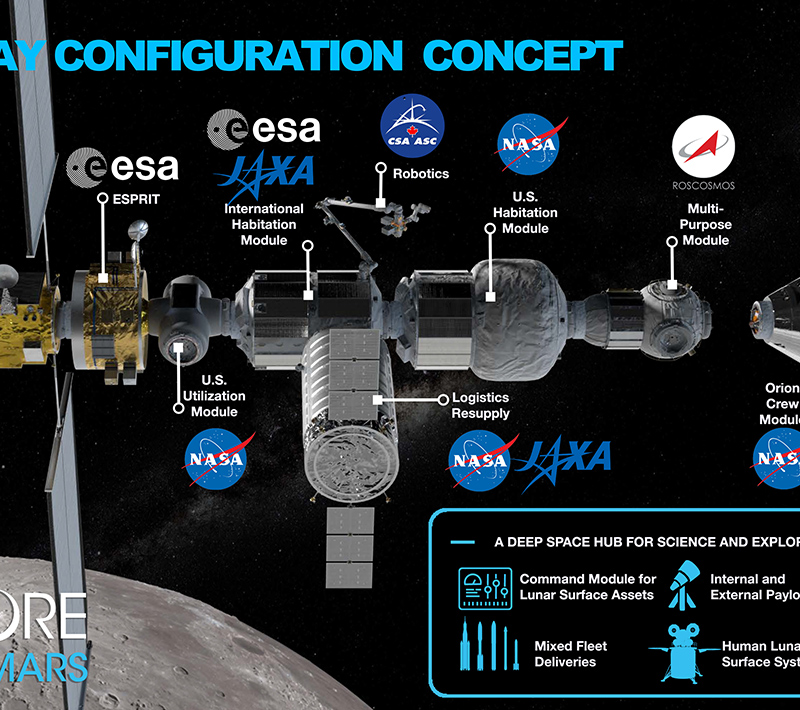Expanding humanity’s reach into deep space and capitalizing on the opportunities offered by the moon and Mars requires development of an infrastructure beyond Earth orbit that can accommodate astronauts, science, and act as a hub for commercial vehicles. The Gateway is that infrastructure.
An effective Gateway built on sound engineering and operational principles established for the International Space Station will provide a flexible, reusable and reliable operations center for astronauts and a capable research station that can conduct groundbreaking science with or without human presence. By providing a central base hosting trips to the surface and research in orbit, Gateway will serve for the moon and cislunar space the same role an airport serves for its community.
The Gateway can achieve initial operating capability quickly by using the Space Launch System, along with Orion as the tug, to launch the module to lunar orbit where they will meet with a Power Propulsion Element that will act as the power station and guidance system. Once in place the Gateway envisioned by NASA and supported by international space agencies will act as a catalyst for exploration of cislunar space while opening much of the lunar surface to exploration. It will also be able to position and reposition itself in different orbits, offering a critical waypoint for crews heading to and from Mars.
With a limited set of modules providing critical needs of a crew and its mission objectives, the Gateway will also offer opportunities for involvement by international partners and commercial enterprises to develop their own modules. Once connected, these components will expand Gateway capabilities further, offering untold flexibility in many areas of exploration. The Gateway will also include ports to host robotic and crew-capable lunar landers, enabling the transfer of cargo and human beings between lunar orbit and a wide range of landing sites on the surface. All of these capabilities, plus the ability of the Gateway to fly over every region of the moon including its poles, make the spacecraft a worthy successor to the legendary Apollo Program that gave humans the first close look at our nearest celestial neighbor. After a brief exploration and scientific program on the moon, the world community is ready for a longer-lasting exploration of the moon and program built to take full advantage of its potential.
The opportunities of lunar exploration from a scientific and commercial perspective require a platform in deep space that utilizes all the hard-won knowledge and expertise of NASA, the world space community and space industry. From engineering to the international relationships that make modern space exploration possible, the Gateway concept best accomplishes the needs of deep space exploration with the flexibility to meet national and international goals and open space further to commercial opportunity.


